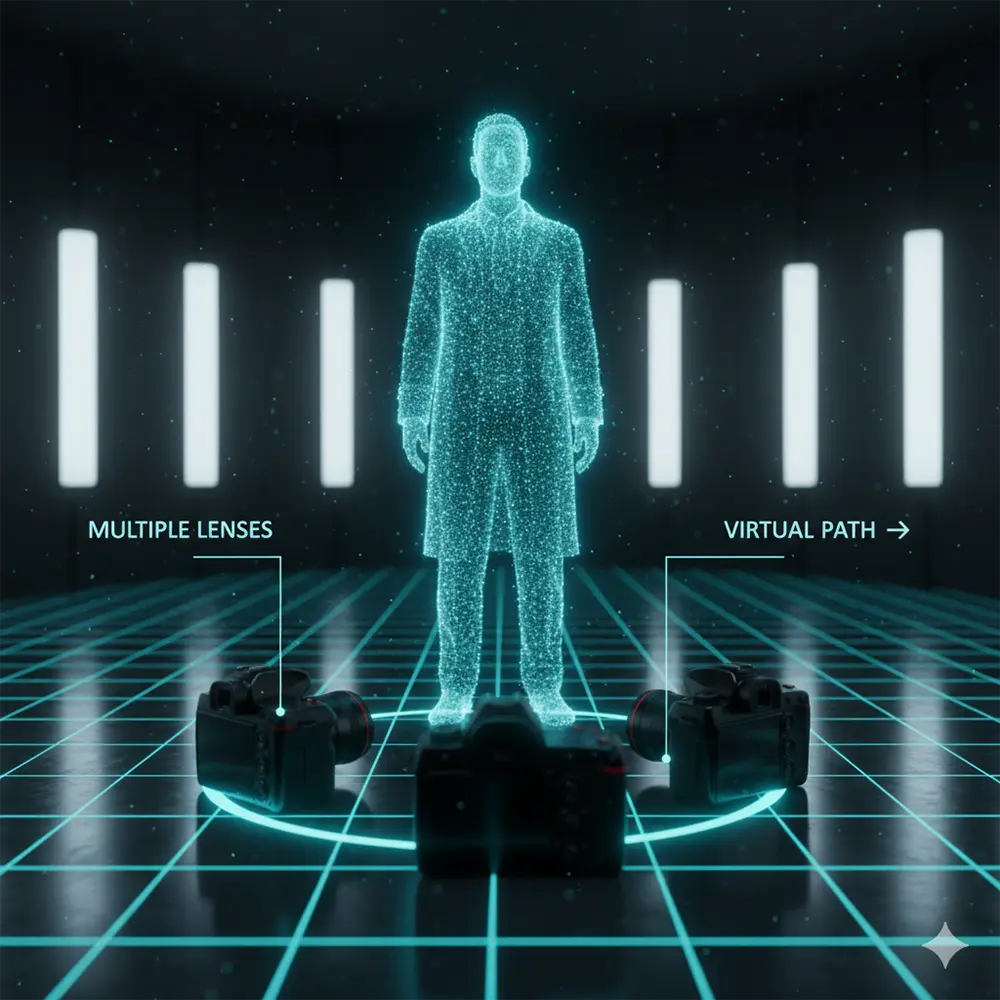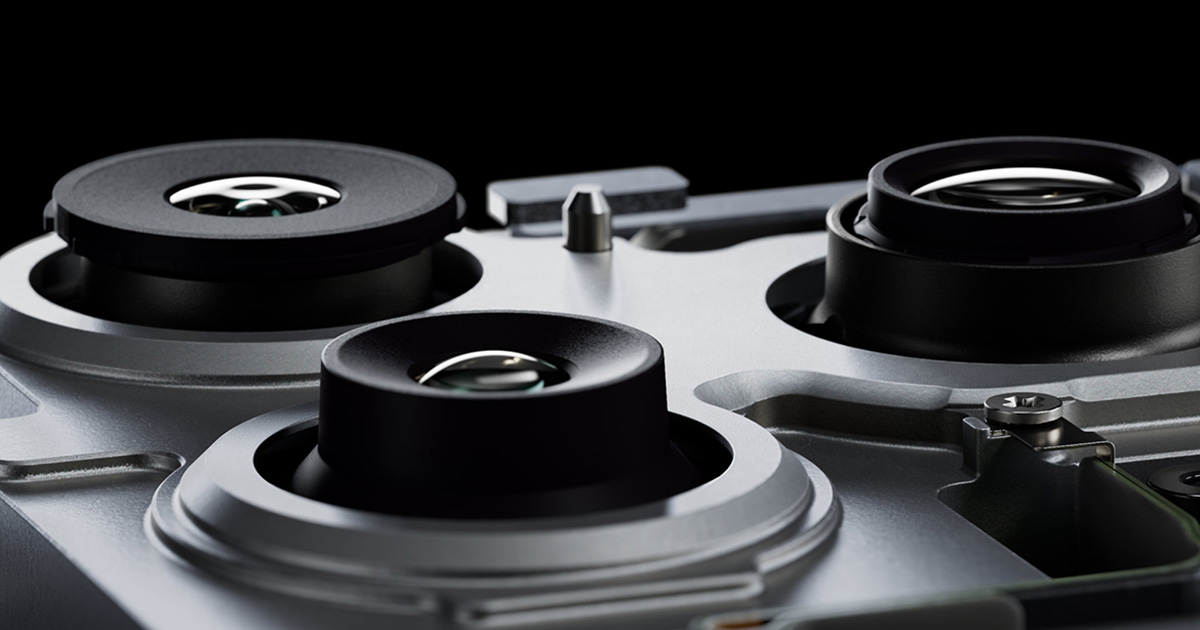Released on September 19, 2025, the iPhone 17 Pro is Apple's latest entry into the premium smartphone market. It emphasizes on-device artificial intelligence and deeper integration with the Vision Pro headset, all supported by a triad of significant hardware changes: a new A19 Pro chip, increased system memory, and a more robust thermal architecture. This article provides a neutral technical analysis of its key technologies and their position within the competitive landscape.
1. Foundational Architecture: The Performance Triad
The iPhone 17 Pro's internal architecture is built around three core upgrades designed to support "Apple Intelligence," the company's suite of on-device AI features. The decision to make 256GB the base storage is a direct result of this strategy; on-device AI models require significant local storage, rendering 128GB insufficient. This approach contrasts with cloud-based AI from competitors, as it allows for AI processing without sending user data to servers, a key component of Apple's privacy-focused marketing.
Complementing the A19 Pro chip is a significant upgrade in system memory. The iPhone 17 Pro models are the first to feature 12GB of LPDDR5X RAM, an increase from the 8GB in the previous generation. [4] While Apple does not advertise RAM figures, this specification was confirmed through developer tools and technical analysis following the launch. [5] This increase is not merely for specification sheets; it is essential for the seamless operation of on-device AI, advanced multitasking, and handling the large data streams produced by the new camera system.
The larger memory is particularly impactful for professionals using memory-intensive applications. For instance, the 12GB of RAM is a significant upgrade for Matterport service providers who rely on iPhones for 3D scanning. Matterport's own documentation recommends devices with maximum available RAM to ensure faster scan processing and data alignment. [6] With more RAM, the iPhone 17 Pro can handle larger, more complex scans with greater speed and stability, reducing on-site capture time and streamlining the creation of high-fidelity digital twins.
To manage the heat generated by the A19 Pro chip and 12GB RAM during sustained tasks, the device incorporates a graphene vapor chamber. This technology, common in high-performance Android phones, uses a sealed chamber with a small amount of liquid that vaporizes and condenses to efficiently transfer heat away from the processor. This enables the device to avoid significant thermal throttling for longer periods, a critical factor for reliability during on-location creative work. [1]
2. Pro Fusion Camera System
The iPhone 17 Pro camera system now features 48-megapixel sensors for all three of its rear-facing cameras: the Main (24mm equiv.), Ultra Wide (13mm equiv.), and Telephoto. This strategy of sensor parity across lenses is a notable departure from competitors who often pair a very high-resolution main sensor with lower-resolution secondary sensors. The goal is to provide consistent image quality, color science, and detail across the entire zoom range.
The Telephoto lens sees the most significant hardware upgrade, now achieving an 8x optical-quality zoom (200mm equivalent). This is enabled by a "tetraprism" optical design, which folds the light path four times within the lens assembly, allowing for a long focal length without a physically protruding lens. To manage low-light performance across these high-resolution sensors, the system employs two common computational techniques:
- Pixel Binning: A process where data from four adjacent pixels on the sensor is combined into one "super-pixel." This reduces the output resolution to 12MP but significantly increases light-gathering ability, resulting in a cleaner image with less digital noise.
- Image Stacking (Deep Fusion): In challenging lighting, the phone captures multiple frames at different exposures and merges them. An algorithm aligns the images and intelligently selects the sharpest parts of each frame, averaging out random noise to produce a single, well-exposed, and detailed image.
3. Professional Video Capabilities
The iPhone 17 Pro is the first smartphone to incorporate support for the ProRes RAW video codec. For non-technical users, this can be understood by analogy: a standard video file (like an MP4) is like a JPEG photo—the colors and exposure are "baked in." ProRes RAW is like a film negative or a RAW photo; it contains the unprocessed data from the sensor, giving videographers far greater flexibility in post-production. [2]
Furthermore, the inclusion of Genlock and timecode support (via compatible third-party hardware) allows the iPhone 17 Pro to be synchronized with professional cinema cameras, a feature previously unheard of in a smartphone. This allows it to be used not just as a B-camera, but as an integrated component in complex, multi-camera productions. The ability to shoot in 4K at 120fps in Dolby Vision further solidifies its position as a serious tool for filmmakers.

Another software-based feature, which Apple markets with effects like "bullet time," works by simultaneously recording from all three lenses and using the A19 Pro's Neural Engine to generate interpolated frames, creating a "virtual" camera path that arcs around a subject.
4. The Spatial Computing Ecosystem
A primary function of the iPhone 17 Pro is to serve as a content capture device for the Apple Vision Pro. The synergy between iOS 26 and visionOS 26, as detailed in Apple's June 9 press release, is central to this strategy. [3] The new hardware directly enables these experiences:
- From Photos to Immersive Memories: A new visionOS 26 feature called "spatial scenes" uses a generative AI algorithm to transform standard 2D photos into immersive experiences with lifelike depth. The iPhone 17 Pro's advanced camera system and LiDAR scanner provide the necessary high-fidelity depth data to enable this feature on the Vision Pro.
- The 3D Web: The update allows web developers to embed 3D models directly into web pages. This creates a direct workflow: a product or space can be scanned and modeled using the iPhone 17 Pro's LiDAR and photogrammetry capabilities, then seamlessly integrated into a website for an interactive, spatial viewing experience on Vision Pro.
- A Tool for Immersive Video: visionOS 26 now natively supports 180-degree and 360-degree content. The iPhone 17 Pro's 48MP Ultra Wide lens and powerful A19 Pro chip make it a first-class device for creating this type of immersive video for the platform.
5. A Tool for Digital Voluntarism: Google Local Guides
Beyond its professional applications, the iPhone 17 Pro's advanced camera system serves as a highly efficient tool for contributing to community-driven platforms like Google Local Guides. The speed and quality of capture remove friction from the process of documenting and reviewing local businesses and points of interest.
A key enabler for this is the enhanced dedicated Camera Button. Building on the foundation of the Action Button we analyzed in last year's commentary, the new button is now pressure-sensitive with two stages. A light half-press locks focus and exposure, mimicking the functionality of a professional camera, while a full press captures the image. A quick double-press instantly begins video recording, ensuring fleeting moments are never missed. This tactile control makes capturing high-quality content for reviews faster and more intuitive.
Google actively encourages Local Guides to upload short videos in addition to photos, as they provide a more dynamic and authentic view of a location. The iPhone 17 Pro's superior video stabilization and image quality, especially when paired with a portable gimbal, allow users to create smooth, cinematic-quality clips that significantly enhance their reviews. This transforms the act of buying an expensive phone into an opportunity to contribute valuable, high-quality data that improves digital maps for the entire community.
Furthermore, the same technology that benefits professionals—the LiDAR scanner, the powerful A19 Pro chip, and the 12GB of RAM—also empowers enthusiasts to take their contributions to the next level by creating detailed Matterport tours of public spaces or local businesses, democratizing the creation of immersive 3D content.
6. Competitive Landscape
The iPhone 17 Pro enters a market with strong competition, primarily from Samsung's flagship Galaxy S-series. The table below outlines the key philosophical and technical differences between the two currently available platforms.
| Feature | Apple iPhone 17 Pro | Samsung Galaxy S25 Ultra |
|---|---|---|
| AI Strategy | On-device "Apple Intelligence" for privacy-focused processing. Requires large local storage. | Hybrid model combining on-device and cloud-based "Galaxy AI" features for flexibility. |
| System Memory (RAM) | 12GB LPDDR5X, focused on system-wide efficiency and professional app performance. | Up to 16GB LPDDR5X (rumored), focused on maximum multitasking and raw performance specs. |
| Main Camera System | Three 48MP sensors for consistency across all lenses. Focus on computational photography. | 200MP main sensor for maximum detail, with lower-resolution secondary sensors. Focus on hardware specifications. |
| Telephoto Zoom | 8x optical-quality zoom (200mm equiv.) via tetraprism design. | 10x true optical zoom via folded periscope lens, with advanced digital zoom capabilities. |
| Pro Video Codec | Apple ProRes RAW for maximum post-production flexibility within the Apple ecosystem. | 8K video recording and Expert RAW format, offering broad compatibility with Windows-based editing suites. |
| Ecosystem Play | Deep integration as a capture device for the Vision Pro spatial computing platform. | Focus on DeX desktop mode for phone-as-PC productivity and broad interoperability with Windows. |
7. Guidance for Prospective Buyers in India
For individuals in India considering the iPhone 17 Pro, it is crucial to make informed decisions regarding configuration and purchase channels to maximize the value of this significant investment. We recommend purchasing directly from the Apple India Online Store or at the official Apple Store locations in Mumbai (BKC) or Delhi (Saket).
- Configuration: For any user intending to shoot video professionally, especially using the ProRes RAW format, the 1TB storage model is the only logical recommendation. The immense file sizes of RAW video will quickly consume lesser capacities, creating constant and disruptive workflow interruptions on set. The 512GB model should be viewed as a bare minimum for shorter-form content only.
- Extended Warranty: Purchasing AppleCare+ is strongly advised. The iPhone 17 Pro is a precision instrument built with expensive materials. Despite its durability, accidental damage can lead to exorbitant repair costs. AppleCare+ functions as essential insurance for a professional tool, providing peace of mind and predictable service costs.
- Essential Accessories: While the Ceramic Shield front and back glass is exceptionally tough, it is not impervious to damage. The forged aluminum unibody, while strong, can be scratched or dented. A high-quality case, like Apple's own TechWoven Case, is a necessary addition to protect the device from the rigors of daily use and on-location work, thereby preserving its resale value.
- Purchase Experience: Ordering online from Apple ensures you receive a factory-sealed product delivered reliably by trusted couriers like Blue Dart. This guarantees the authentic unboxing experience—a small but satisfying detail for many enthusiasts—and avoids the common practice at some third-party retailers of unboxing and setting up the device for you, which can compromise that initial experience.
8. Conclusion
The iPhone 17 Pro is a device defined by its role within the broader Apple ecosystem. Its core architectural decisions—from the increased RAM and 256GB base storage for on-device AI to the advanced camera system—are designed to support its function as a primary content creation tool for the Vision Pro platform. This contrasts with competitors like Samsung, which offer a different value proposition based on standalone hardware versatility, peak specifications, and software customization. The choice between these devices depends on whether the user is invested in Apple's integrated spatial computing ecosystem or prioritizes a more open, hardware-focused platform.
9. References
- "iPhone 17 Pro Teardown: A Look at the New Thermal System," iFixit, September 22, 2025.
- "Explainer: What is ProRes RAW and Why Does It Matter?," No Film School, September 15, 2025.
- "visionOS 26 introduces powerful new spatial experiences for Apple Vision Pro," Apple Newsroom, June 9, 2025.
- "iPhone 17 Pro Confirmed to Feature 12GB of RAM," MacRumors, September 20, 2025.
- "Apple iPhone 17 Pro Full Technical Specifications," PCMag, September 19, 2025.
- "Best Practices for Capturing with Matterport," Matterport Help Center. Retrieved September 27, 2025.
